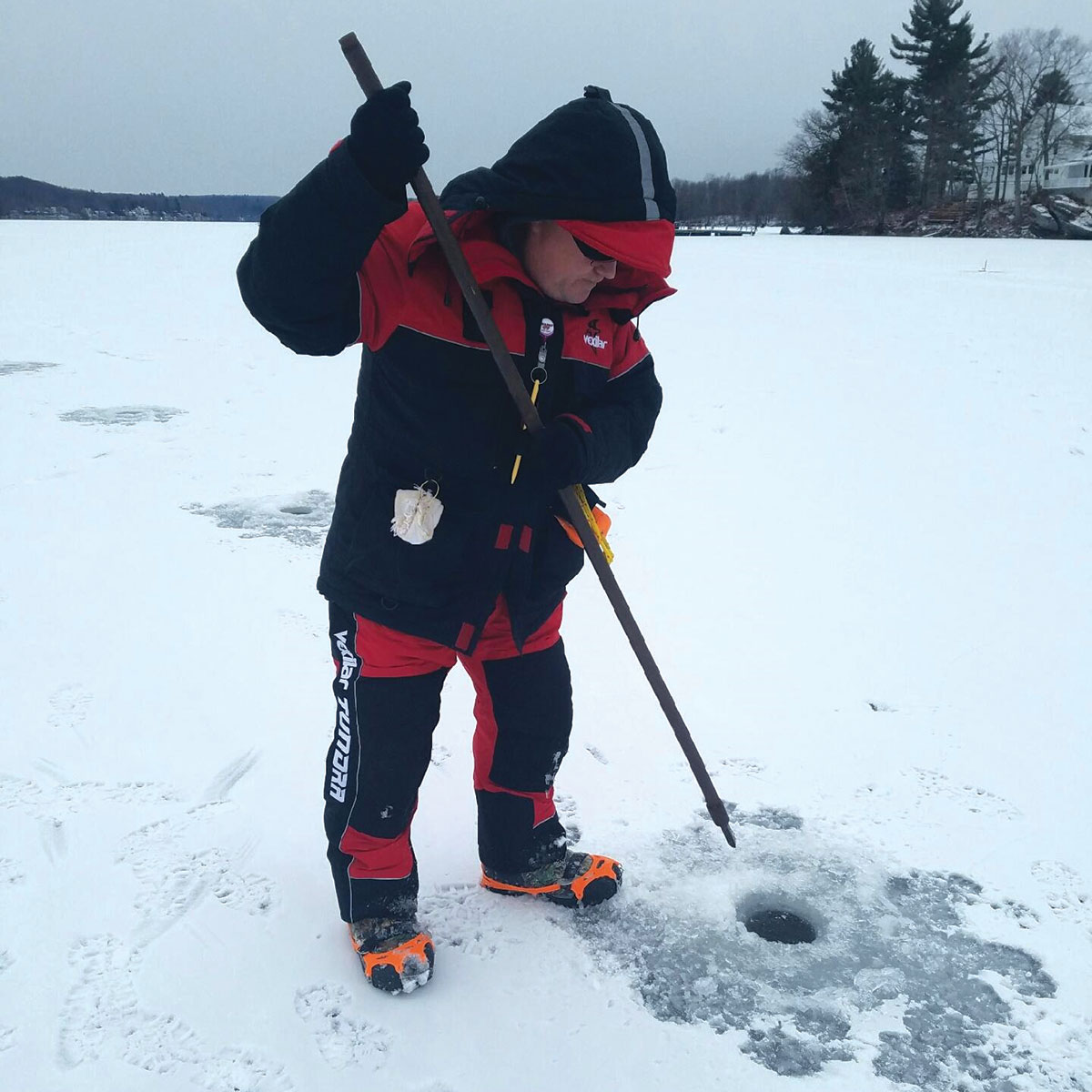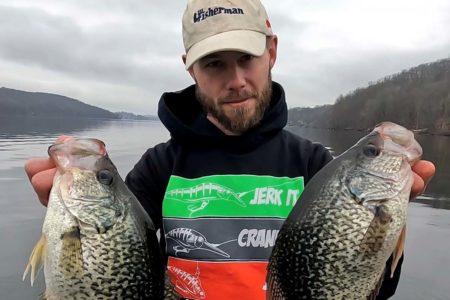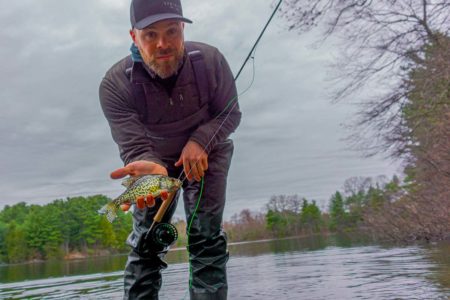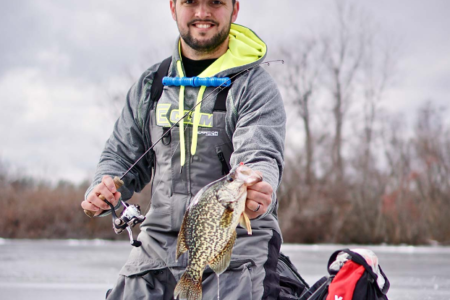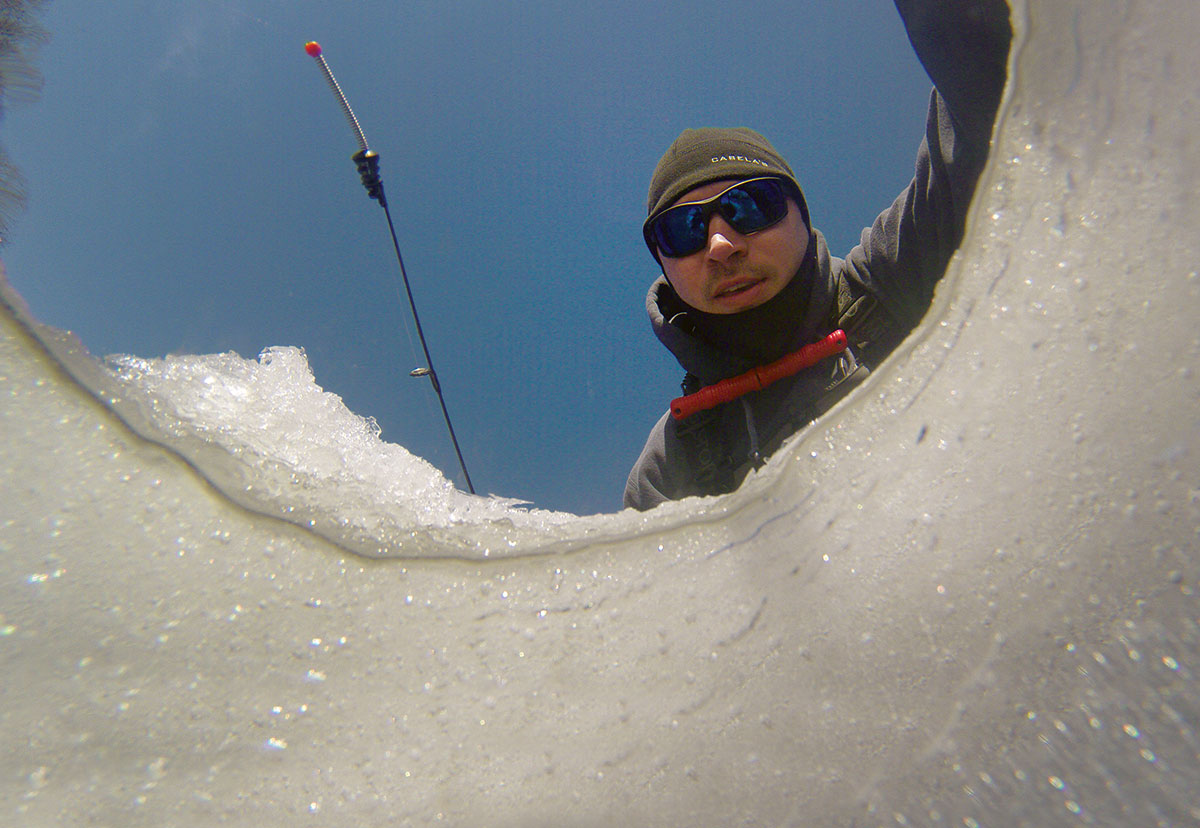
Before you can pull a fish out of a frozen body of water, you have to figure out how and where to put the holes.
Ice fishing is not for everyone; I will concede that. To many it is simply unnatural to cut holes in a frozen lake and stand out in the freezing cold for hours on end with the hope of perhaps catching a couple of fish. For others ice fishing is a way of life. I currently find myself somewhere in the middle; I don’t take things too seriously but I do enjoy the camaraderie and social aspect in addition to the occasional fish being slid up from a semi-frozen hole.
Some time in early December a level of excited anticipation begins to fill my body as air and water temperatures drop, and the weekly fishing reports begin to include references to “skim ice” followed shortly thereafter by that first crazy who cut holes in 2 inches of black ice and slid the first pike, bass or perch of the season out of the depths. I am more apt to wait for the first quarter of the New Year before making my first outing, but none the less ice fishing is a great way to pass by the cold winter months when you can find good ice.
Getting out on safe and productive ice is critical of course, but then comes what to do with it–in it and on it–once you find it!
Making Ice Chips
First and foremost, if you want to get out and fish a frozen pond or lake then you need to figure out a way to get through the ice. Your options here can be as simple as borrowing someone else’s unused hole on up to using a gas or even lithium battery powered auger.
While you might be able to get by on occasion by chipping skim ice out of an unused hole with your boot, the most basic way to cut a hole in the ice is with a spud. A spud is essentially an elongated ice chisel with a chisel on one end that is used to manually chip away chunks of ice. Brand-new holes may be “cut” with a spud but the process can be tedious and difficult if the ice is thick. This method works best if you’re fishing a heavily-pressured water body where there are a lot of leftover holes from other anglers. You can make short work of the ice that forms overnight on holes drilled the day before with a spud.
Next up is the hand auger. This is basically a long cork screw with a set of blades or a scoop on one end and an offset handle on the other. Picture one of those old-timey hand-powered drills but on a much larger scale and you get the idea. Hand augers are really only limited by the angler’s stamina as it takes a bit of physical effort to make them go, but you never have to worry about running out of gas or having a battery die mid-drilling with a hand auger. I grew up using one of these and still carry one with me to this day.
Last but not least are powered augers. These traditionally run on some sort of fuel (gasoline or propane), but recently companies have begun offering lithium-ion battery powered models. I have even seen some that accept a cordless drill mounted to the top to power the blades. Power augers are great if you plan to drill a lot of holes, fish in very thick ice or if you just like the option of being able to fire up the auger and power through the ice. On the downside, of course, is the potential to run out of fuel or battery life. Sure you can pack a back-up tank of gas or have an extra battery on hand, but even with these back-ups on hand it is a good idea to have a hand auger at the ready, “just in case.” You are, after all, dealing with machinery in some of the most inhospitable of conditions and there is always a chance that something goes wrong.
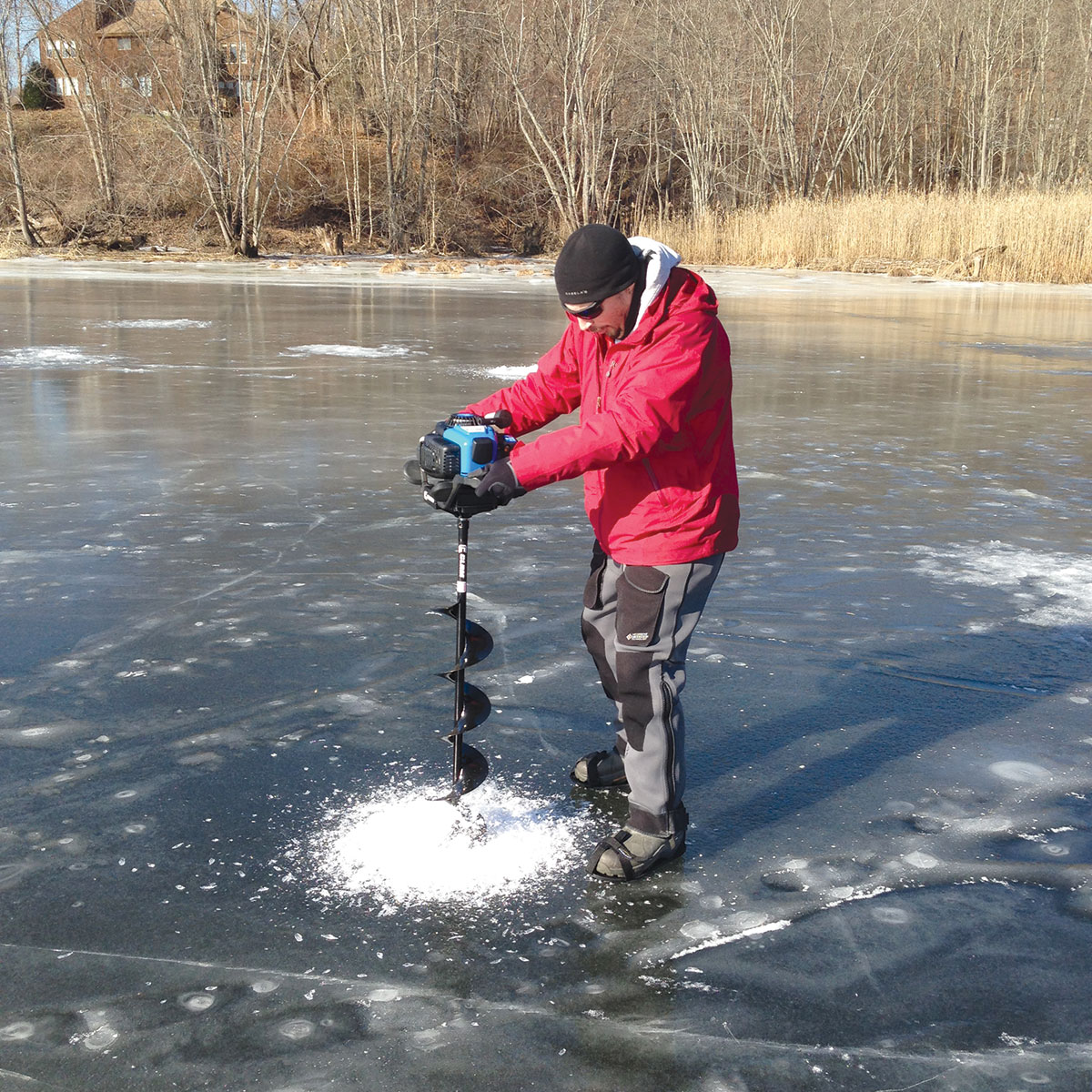
Setting the Spread
So you’ve got a way to cut through the ice, now what? You have a couple of options here and I’ve done each of them at one time or another and they all have merit. I am going to assume for the purpose of this article that you are not intimately familiar with the chosen lake or pond. This is not a spot that you fish in the summer and already have all mapped out on your boat’s electronics.
The simplest but not most efficient is to just walk out onto the ice and start drilling away. Cut holes here and there as the fancy strikes you until the ice surface looks like so much Swiss cheese or you run out of energy. If there are leftover holes from past ice anglers, cut holes near those spots. If there are signs of fish being caught the day before like leftover bait, blood or scales then, all the better. This may prove successful but I liken it to motoring out in a boat and blindly dropping a jig down into the depths or chasing the fleet with the hope of catching something. Sure you might hit a few fish, but you’re not maximizing your effort and good luck repeating the success you may have.
Next up is to “read the ice.” Assuming the water body isn’t too large, take a few minutes to look around for some sort of fish-attracting devices above the ice. Included here would be such things as islands, points, feeder streams, standing time and so on—basically the same stuff that might warrant some casts in the open water. Certain species relate to specific structure and this holds true to at least some degree in the winter. Set your spread of holes to maximize coverage around the structure.
When I approach an unfamiliar lake I usually begin by drilling holes near downed timber as this is an obvious sign of structure. I’ll check the depth, and if it seems deep enough I’ll make some more scout holes and work out from there. If there is no visible timber I’ll try to imagine where there might be a drop-off or changing bottom contours. These can form around islands, near shore points or adjacent to a sharp cliff overhanging the shoreline. Like reading a sandy beach, often a very steep shoreline signals a similar drop-off in the water.
Lastly, and this is the most efficient method, pre-plan where you should drill holes by checking out a chart or bathymetric map of the lake. Fish generally relate to structure, this is pretty basic. Scan the chart for changes in the bottom whether it is depth, make-up (mud, stone, sand, etc.) and so on. Shallow muddy flats likely host vegetation in the summer so working this type of area can also be productive early in the season before the weeds die off. If there is a stream or natural spring feeding the lake, this is another good spot to target. Also, simply targeting the deeper parts of the lake in the winter can be a sound place to begin. Really the general idea when deciding where to drill some holes in the ice is not all that different than the warmer months, and you’ll eventually learn how your target species may relate somewhat differently to a given type of structure under the ice versus open water.
